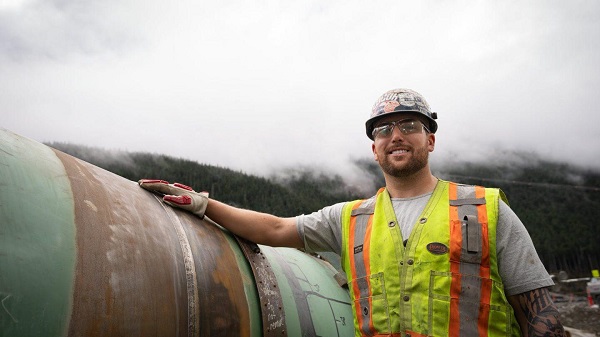Business
No reliable evidence that ESG investing produces above-average returns

From the Fraser Institute
Despite growing skepticism among investors, as evidenced by their withdrawal of billions of dollars from ESG equity funds so far in 2024, many finance industry leaders continue to claim that ESG-focused investing produces above-average returns.
But is that true?
Environmental, social and governance (ESG) is a movement designed to pressure businesses and investors to pursue larger social goals. According to ESG theory, firms that receive poor ratings from ESG rating agencies should lose investment dollars. Yet the claim that ESG-focused investing can help investors do well by doing good has received surprisingly little empirical support from academic studies.
However, according to a new study published by the Fraser Institute, which tracked 310 companies listed on the Toronto Stock Exchange from 2013 to 2020, neither ESG rating upgrades nor downgrades were related in a statistically significant way to the stock market performance of companies.
Moreover, because the study finds that ESG ratings changes—which, when released, are effectively new information for investors—are not consistently related to financial returns, ESG ratings are likely not relevant to the expected future profitability of publicly listed companies in Canada.
This of course raises the question—if new information (i.e. ratings changes) about a company’s ESG-related practises is not statistically related to equity returns from investing in that company, why do money managers pay for the services of ESG rating companies?
One possible reason is that managers pass a substantial share of the costs along to customers who are willing to sacrifice financial returns (due to higher management fees) to express their commitment to environmental sustainability and other social causes. Another possible reason is that promoting ESG-focused investment alternatives appears to have been, at least until recently, an effective marketing tool.
But again, the empirical evidence suggests there’s no reliable statistical relationship between ESG-focused investing and the risk-adjusted returns earned by investors. And since asset managers typically charge higher fees for ESG-focused mutual funds, ESG investment strategies are more likely to underperform than overperform conventional investment strategies.
Certainly, if some percentage of investors choose to pursue ESG-related investment strategies, even at the cost of lower risk-adjusted investment returns, there should be no legal or regulatory restrictions on doing so. However, securities regulators should closely monitor the investment industry to ensure it provides reliable and up-to-date information about the financial performance of ESG-focused investment products that portfolio managers market to the public.
At the same time, when ESG advocates push for more government-mandated ESG disclosures from companies in Canada, policymakers should be wary of any claims that greater disclosure mandates will improve the financial performance of companies.
Author:
Business
Vacant Somali Daycares In Viral Videos Are Also Linked To $300 Million ‘Feeding Our Future’ Fraud


From the Daily Caller News Foundation
Multiple Somali daycare centers highlighted in a viral YouTube exposé on alleged fraud in Minnesota have direct ties to a nonprofit at the center of a $300 million scam, the Minnesota Star Tribune reported Thursday.
The now-infamous videos from YouTube influencer Nick Shirley, posted Dec. 26, showed several purported Somali-run daycare centers receiving millions in taxpayer funds despite little evidence that children were actually present at the facilities. Now it turns out that five of the 10 daycare centers Shirley visited operated as meal sites for Feeding Our Future, the Minnesota-based nonprofit implicated in a massive fraud scheme that has already produced dozens of convictions, the outlet reported.
Between 2018 and 2021, those five businesses received nearly $5 million from Feeding Our Future, the outlet reported. While none of the centers in Shirley’s video have been legally accused of wrongdoing, the revelations underscore the sprawling web of fraud engulfing the state. (RELATED: Somalis Reportedly Filled Ohio Strip Mall With Potential Fraudulent Childcare Centers)
Dear Readers:
As a nonprofit, we are dependent on the generosity of our readers.
Please consider making a small donation of any amount here.
Thank you!
🚨 Here is the full 42 minutes of my crew and I exposing Minnesota fraud, this might be my most important work yet. We uncovered over $110,000,000 in ONE day. Like it and share it around like wildfire! Its time to hold these corrupt politicians and fraudsters accountable
We ALL… pic.twitter.com/E3Penx2o7a
— Nick shirley (@nickshirleyy) December 26, 2025
Federal prosecutors have charged over 70 individuals — mostly from the Somali community — with stealing more than $300 million from the Federal Child Nutrition Program through Feeding Our Future. During the COVID-19 pandemic, the program funded sites across Minnesota to provide meals to children. Prosecutors say leaders of Feeding Our Future, along with dozens of associates who ran sponsored “meal sites,” submitted false or inflated meal counts to claim reimbursements.
One facility featured in Shirley’s video, the Minnesota Best Childcare Center, received $1.5 million from Feeding Our Future, according to the Minnesota Star Tribune.
Minnesota Best Childcare Center, which has been licensed by the state since 2013, did not respond to the Daily Caller News Foundation’s request for comment.
Other daycares featured in Shirley’s video have been cited dozens of times for rule violations while continuing to receive millions in state funding. The now-infamous Quality “Learing” Center was cited for 121 violations in the past three years, including for failing to report a “death, serious injury, fire or emergency as required,” according to the Star-Tribune.
The paper’s investigation found that six of the facilities featured by Shirley were either closed or employees did not open their doors.
Following that exposé, which has accumulated more than 135 million views on X, the Trump administration announced it would freeze all childcare disbursements to Minnesota while federal officials review how taxpayer dollars have flowed to licensed providers.
The fraud allegations extend beyond childcare, with prosecutors claiming millions in taxpayer funds were also stolen from Minnesota’s Housing Stabilization Services and autism treatment programs. Federal prosecutors also estimate that as much as half of the roughly $18 billion Minnesota has spent since 2018 on 14 Medicaid programs may have been siphoned off by fraudsters.
Even the state’s assisted living program has come under scrutiny, with Republican state Rep. Kristin Robbins warning that individuals connected to the Feeding Our Future scheme continue to receive millions in taxpayer funds.
Business
The great policy challenge for governments in Canada in 2026

From the Fraser Institute
According to a recent study, living standards in Canada have declined over the past five years. And the country’s economic growth has been “ugly.” Crucially, all 10 provinces are experiencing this economic stagnation—there are no exceptions to Canada’s “ugly” growth record. In 2026, reversing this trend should be the top priority for the Carney government and provincial governments across the country.
Indeed, demographic and economic data across the country tell a remarkably similar story over the past five years. While there has been some overall economic growth in almost every province, in many cases provincial populations, fuelled by record-high levels of immigration, have grown almost as quickly. Although the total amount of economic production and income has increased from coast to coast, there are more people to divide that income between. Therefore, after we account for inflation and population growth, the data show Canadians are not better off than they were before.
Let’s dive into the numbers (adjusted for inflation) for each province. In British Columbia, the economy has grown by 13.7 per cent over the past five years but the population has grown by 11.0 per cent, which means the vast majority of the increase in the size of the economy is likely due to population growth—not improvements in productivity or living standards. In fact, per-person GDP, a key indicator of living standards, averaged only 0.5 per cent per year over the last five years, which is a miserable result by historic standards.
A similar story holds in other provinces. Prince Edward Island, Nova Scotia, Quebec and Saskatchewan all experienced some economic growth over the past five years but their populations grew at almost exactly the same rate. As a result, living standards have barely budged. In the remaining provinces (Newfoundland and Labrador, New Brunswick, Ontario, Manitoba and Alberta), population growth has outstripped economic growth, which means that even though the economy grew, living standards actually declined.
This coast-to-coast stagnation of living standards is unique in Canadian history. Historically, there’s usually variation in economic performance across the country—when one region struggles, better performance elsewhere helps drive national economic growth. For example, in the early 2010s while the Ontario and Quebec economies recovered slowly from the 2008/09 recession, Alberta and other resource-rich provinces experienced much stronger growth. Over the past five years, however, there has not been a “good news” story anywhere in the country when it comes to per-person economic growth and living standards.
In reality, Canada’s recent record-high levels of immigration and population growth have helped mask the country’s economic weakness. With more people to buy and sell goods and services, the overall economy is growing but living standards have barely budged. To craft policies to help raise living standards for Canadian families, policymakers in Ottawa and every provincial capital should remove regulatory barriers, reduce taxes and responsibly manage government finances. This is the great policy challenge for governments across the country in 2026 and beyond.
-

 Business10 hours ago
Business10 hours agoVacant Somali Daycares In Viral Videos Are Also Linked To $300 Million ‘Feeding Our Future’ Fraud
-

 Energy4 hours ago
Energy4 hours agoThe U.S. Just Removed a Dictator and Canada is Collateral Damage
-

 Haultain Research2 hours ago
Haultain Research2 hours agoTrying to Defend Maduro’s Legitimacy
-

 International10 hours ago
International10 hours ago“Captured and flown out”: Trump announces dramatic capture of Maduro
-

 International10 hours ago
International10 hours agoTrump Says U.S. Strike Captured Nicolás Maduro and Wife Cilia Flores; Bondi Says Couple Possessed Machine Guns
-

 International4 hours ago
International4 hours agoU.S. Claims Western Hemispheric Domination, Denies Russia Security Interests On Its Own Border
-

 International5 hours ago
International5 hours agoUS Justice Department Accusing Maduro’s Inner Circle of a Narco-State Conspiracy
-

 International1 day ago
International1 day agoMaduro says he’s “ready” to talk












